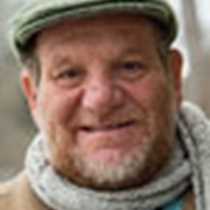We’ve tucked into a protected anchorage in Freshwater Bay, had breakfast, and we’re ready for the morning’s activities. We are old hands at this now, gearing up and choosing what we want to do, and we quickly pile into the expedition landing craft and motor away. Cruisers explore, and kayakers embark on a paddle that is by turns serene, then exciting, as they make their way into the mouth of Pavlof Creek and a coastal brown bear comes into view. The photographers are already there, perfectly arranged on the bank of the stream, lenses pointing bearward. The bear ignores us, mostly, and gradually we relax a bit from that first reaction: “A BEAR! On the same ground I am standing on!” It’s catching salmon in the shallows below a waterfall, pacing about as if it owns the place. As far as we are concerned, it does. We are grateful that it stays, allows our presence, provides for some beautiful images. If anything our experience in Southeast Alaska so far has given us an even deeper appreciation for this moment. We know, on a deep level, that this bear implies a world, that his existence is proof, as John McFee said, that his place is extant, intact, not just this spot but more country like this all around us, and more beyond that.
Meanwhile the hikers are making their way through the temperate rain forest. Many of us have gone on these hikes together before, and we are adept, stepping over the occasional log, using our hands on the steeper parts, splashing through water with confidence in the abilities of our rubber boots. Above the falls, we examine a beaver lodge before moving on to the margin of Pavlof Lake. It’s not an edge, really; it is hard to tell where lake ends and land begins. The only sounds are our splashing footsteps, quiet when we pause to look across the placid lake to misty forest and multidimensional mountains. Hiking back, we are above the falls and the bear catching fish, and we spread out on the trail, each finding our perfect place to look between trees to watch. At the end of the hike, there’s not much to say; a smile says it all.
Lunch, a beautiful presentation by David Stephens, and then the call comes: whales! Once more, we are out on deck. These aren’t just whales but WHALES. Cooperative feeding humpback whales. Thousands of tons of whale emerging from the sea, mouths agape, all together. A mountain of whales. Behind them, mountain ridges in layered patterns, the varied sky. Overhead, a cloud of gulls. We try using the gulls to guide us, keeping an eye on them when they get up and fly fast together just before the whales emerge underneath. The feeding must be great. The whales make lunge after lunge. It’s a bad day for herring. And then IT HAPPENS. A moment that will be forever seared on our memories. We could describe it this way: the sea erupts. Not lava, but whales. Not one whale. Not two. FIVE or SIX WHALES BREACHING AT ONCE. Right beside us! We whoop and scream and cry at the spectacle, and afterwards no one knows how many there were. We lost our ability to count. We forgot our names. We are rendered speechless. Even Flip Nicklin, a guy who has spent more time around whales than anyone, has never seen THAT before. What Cindy says later at Recap is true: if we should meet, years from now, somewhere in the world, and one of us says, ‘that day, the breaching whales,’ we’ll know: we were there.









